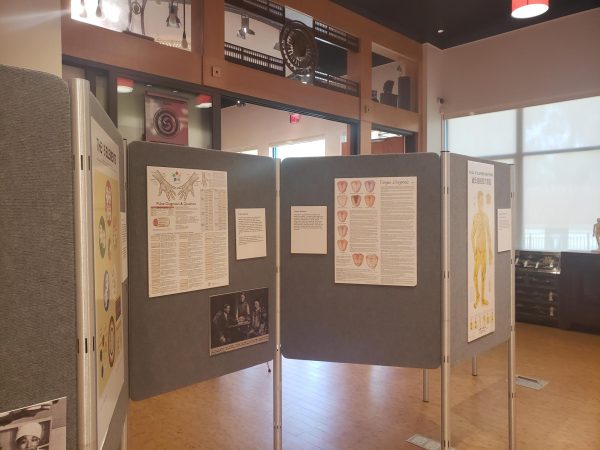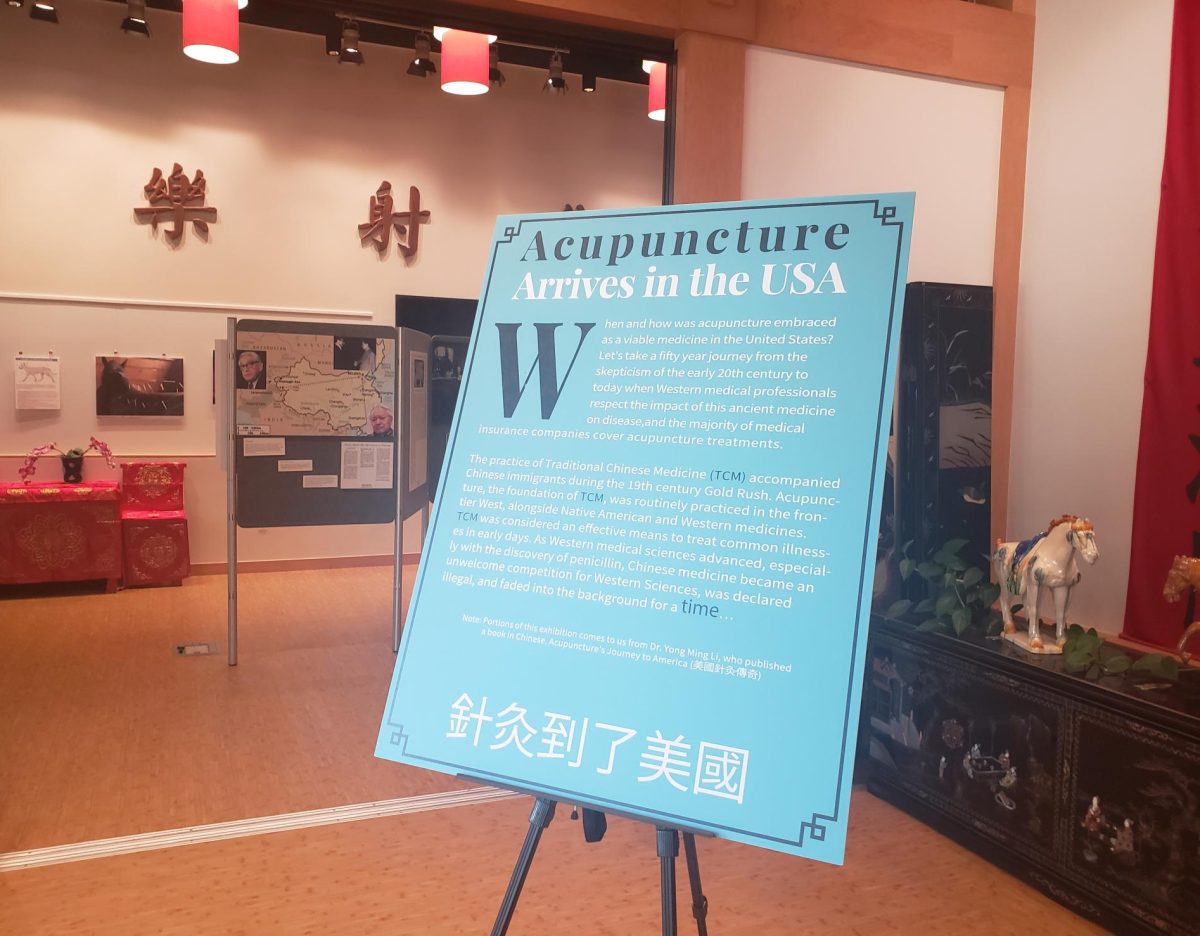The latest exhibit at The Chinese Cultural Center aims to teach students more about Chinese history and medicine by showcasing the origins of acupuncture.
“The significance of the exhibit is to debunk the myth about acupuncture…being invasive or hurtful,” said Lilly Cheng, founding director of the Chinese Cultural Center. “Rather, (we want) to promote understanding of health and healing. Not only for humankind but also extended to our lovely animal world.”
According to Cheng, acupuncture can be beneficial as an alternative to surgery or medicine for those with chronic pains and injuries.
“The acupuncture exhibit tells the story about how acupuncture came to the United States,” Cheng said. “(Acupuncture came) through Nixon’s visit to China and through the reporting of a great New York Times reporter who was treated with acupuncture while he was sick in China.”
The idea for making the exhibit came from visitors who were interested and asked about the subject. They also got the idea from working on

a similar exhibit at the San Diego Chinese Historical Museum and thought it would fit in here as well.
The process of making the exhibit began around 2020, but the arrival of COVID made the process take longer.
“Normally, it wouldn’t be this long,” Cheng said. “I think COVID put a stop to many things on campus. The Center was actually closed.”
The problems included a lack of face-to-face interaction, forcing them to rely on Zoom. They used this digital medium to interact with the campus virtually by doing online lectures, which motivated them to keep working.
“We could see people were joining us,” Cheng said. “Listening to us, asking us questions, giving us comments, that helped us.”
Another part of the process was meeting Yong Ming Li, author of “Acupuncture’s Journey to America,” which was utilized for the exhibit. He’s also an instructor and a practitioner in both Western and Eastern medicine.
“Dr. Li was interviewed by me personally regarding acupuncture,” Cheng said. “He was the one that helped to bring about the collective wisdom of people who practiced acupuncture.”
Construction of the actual exhibit only took a couple of weeks, according to Yudan Wang, curator and developer of the Chinese Cultural Center. Working together with her coworker, Mu-ting Huang, who serves as the budget analyst for the center, they picked the content that was going to be used and set everything up.
“The only thing is (that) we have some challenge to promote this,” Wang said. “(We want) to let everybody know that we’re here and it’s free and we’re ready to give them the tour.”
The center is currently looking for alternative ways to engage in outreach, such as interacting with the student body instead of relying on social media.
“These programs are totally educational and so we want more people to know about it,” Cheng said.
The Chinese Cultural Center is planning to do future exhibits as well, including Chinese calligraphy next spring and potentially Peking opera. They also have a monthly kung fu workshop.
“The center on campus is for our students, faculty and staff so feel free to stop by our center,” Huang said.
The Chinese Cultural Center is open from Monday to Friday from noon to 4 p.m., with appointments also available for students.
The acupuncture exhibit will be on display into 2024 and can be viewed in room 130 at the college of Professional Studies and Fine Arts.






